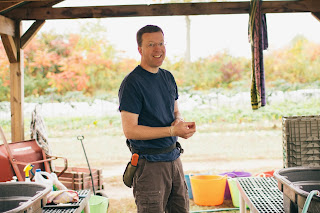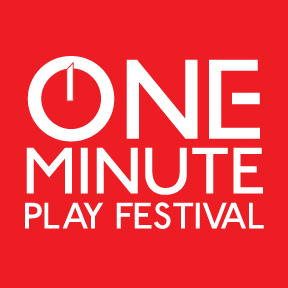 Look what came in this mail this week!
Look what came in this mail this week!Yep, paperback copies of my novel, Moving (a life in boxes)
If you had wanted to read it, but weren't into e-readers, I hope you'll check it out.
(And please let me know about what you think about both the story and the physical book--I'm curious to see if the quality continues to be consistent.)
Here's a quick summary of the novel:
Moving (a life in boxes)
Jed and Lila are compulsive movers. For them, moving boxes, packing tape, and open houses are the ultimate aphrodisiacs. They meet on a moving day, Jed proposes on a moving day, and they end up moving 18 times in 18 years. Moving defines their lives, their identities. They move for fun, to recover from tragedy, and for new opportunities—until Lila decides she wants them to put down roots, in Boston.
Moving tells the story of a marriage challenged by wanderlust, obsession, infertility and adoption, and race.
So how did I do it, what did it cost?
I'd put off making Moving a paperback because I thought that I'd have to cough up a bunch of cash to preorder copies, or else that the Print-on-Demand (POD) quality would be poor. And I knew that it would take some time to change the formatting from the ebook file to something that was more properly typeset for print. And right after I released the ebook, I had zero free time, because I was neck deep in farming.
But with the arrival of winter and a gap in writing projects and commissions, I had some time on my hands. And ebook sales slowed to a trickle. A lot of my friends and family don't have e-readers and haven't been able to read the book. And though I'd like the entire world to salivate at the prospect of reading my novels, I accept that most self-published novels are going to be read by friends and family and die-hard fans of my other work. But for me to reach more of this small cloud of potential readers, I needed a paper version of the book.
The good news for me was that I already had a great cover for the ebook that would work for print (thanks Keary Taylor!) and I'd already paid to have it proofread (thanks Diane Sepanski!).
I had a friend who'd just used Createspace from Amazon to self-publish one of his novels, so I asked him, and he said it was easy. And cheap. Which, if you know you're not going to sell 10,000 copies, is a good thing.
It turned out that Createspace was indeed easy to use (though not quite as simple as publishing an ebook). They already had templates in place for the size of book that I wanted to print, so I could load my manuscript text from the ebook directly into the template. I found a few online sites that gave me some tips--the most valuable was from Anne Charnock which laid it out for me step-by-step, and gave me warnings about potential problems.
The entire process took me about 14 hours (I track such things), and a lot of that time was spent trying to get the cover just right (they provide a template for that, too) and on proofing the layout. Every time you submit the book to receive final electronic proofs, there's a 24-hour turnaround, and I found mistakes a couple times, so that dragged the process out over quite a few days, but I really wanted to get it right.
I spent $20 to get two expedited paper proofs (see the image above), which turned out to be of excellent quality. POD and digital printing has come a long way. My first novel, Tornado Siren, wasn't POD, but the publisher used a digital printing process (they'd run small batches of 250 copies or so), and the quality was acceptable, but the POD copies I have from Createspace are even better (higher quality paper and cover and image/text quality).
That $20 I spent for proofs was all that it cost me to do this. Period. (Because I'd already paid for the cover and proofing for the ebook.) I've set the price at $10, which seems not bad for a paperback (the minimum I was allowed to charge was $9.13). At that price, I get $2.35/book sold through Amazon. (Which means it'll be a while until I make back the money I paid for cover and proofing, but I might get there.) It also sells through the CreateSpace store (but who ever goes there?) where I'd make $4.35/book, and other venues, where I'd make about $0.35 per book. (Think Amazon wants me to sell through them?) I can buy copies for myself for about $3.65/book, plus shipping.
When my first novel, Tornado Siren, was traditionally published, through a small press, the cover price was $14.95. I could buy copies for myself for $7.48, plus shipping. (I bought more than 200, which I sold and gave away to friends and family.) For books sold through Amazon or other sources, I generally made about 67 cents per book. Yep, 67 cents (I was getting 10% royalties off net sales price, not cover price, and wholesalers get a serious discount off the cover price).
When the book finally went out of print, I was able to buy copies of Tornado Siren for $3 (I still have a big pile of them), but hundreds of them were pulped. (Here's a nice post about the policy from EditorialAss). Every year, the publishing destroys/recycles MILLIONS of unsold books, because of the bizarre way that the publishing business works. With the quality and ease of POD books, I've got to wonder if the practice of over-printing might someday be greatly curtailed, at least for books that aren't likely to become bestsellers. With POD, there's really no need to warehouse backlist copies of a book--a bookstore can just order a new copy to replace one that's just been sold, and it can be printed and delivered.
With the economics of self-publishing through Createspace or or other services, you can see why we're seeing a huge surge in self-published books, and why the mid-list is basically collapsing into self-published books. Publishers don't want to take risks on printing lots of books that don't sell, and authors who are only going to sell hundreds of books, to select outlets (friends, family, hard-core fans) can do a lot better financially by going it alone, rather than using a small press or getting a weak deal from a larger press. Publishers continue to offer huge benefits when it comes to exposure and distribution, without a doubt. It is very hard to sell books, and it is very, very hard to sell books without a publicist and marketing team. And book stores don't want to deal with individual authors. And readers are overwhelmed with choice and wary of crappily-written self-published books. But if you've got a book that's going to sell less than 1,000 copies, it might make sense to do it yourself.
I'll report back on how the book does, in terms of reaching readers. I imagine the numbers will be very small, but I also know that more people will read it now that it's not solely available as an ebook. And it feels awfully good to be able to hold a copy of the book in my hand.


